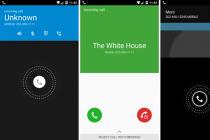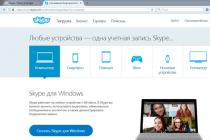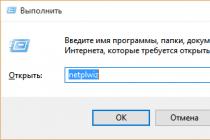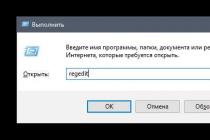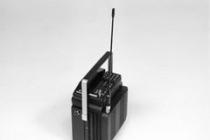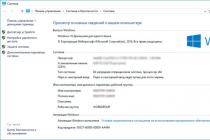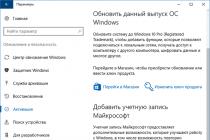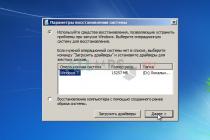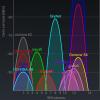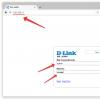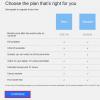Report on the issue:
« Application of information and communication technologies (ICT) in technology lessons . »
The use of information and communication technologies opens up new opportunities for teachers in teaching their subject, improves the effectiveness of learning, the intellectual level of students, instills self-study skills, self-organization, and facilitates the solution of practical problems. The teacher had the opportunity to increase the visibility in the teaching process. The use of computer technology in the classroom allows you to make each lesson unconventional, bright, rich, easy to remember.
Purpose of use information technologies at the lesson:
make the lesson modern (in terms of the use of technical means);
to bring the lesson closer to the worldview of a modern child, since he looks and listens more than reads and speaks; prefers to use information obtained with the help of technical means;
establish a relationship of understanding, mutual assistance between teacher and student;
to help the teacher in the opportunity to present material emotionally and figuratively.
Currently, the use of modern educational technologies, including information and communication, providing personal development a child by reducing the share of reproductive activity in the educational process, can be considered as a key condition for improving the quality of education, reducing the workload of students, more efficient use of study time.
The use of ICT in technology lessons allows you to diversify the forms of work, the activities of students, activate attention, and increase the creative potential of the individual. The construction of diagrams, tables in the presentation allows you to save time, to design the material more aesthetically. Use of illustrations, drawings, etc. foster interest in the lesson; make the lesson interesting. In technology lessons, the use of ICT allows the use of a variety of illustrative, information material.
With the help of a multimedia project, slides, presentations created in Microsoft program Power Point. The use of this technology allows:
Increase the level of visibility during training;
Revitalize the educational process, add elements of entertainment;
Save a lot of time in the lesson.
Schoolchildren enjoy working with a computer and are happy to get involved in activities. Stimulation of cognitive interests in schoolchildren is caused by the novelty of visual teaching aids.
The use of computers is effective at all stages of the pedagogical process: at the stages of presenting educational information, mastering educational material in the process of interactive interaction with a computer, repetition and consolidation of acquired knowledge and skills, intermediate and final control and self-control of the achieved learning outcomes. This approach allows you to customize the learning process.
Recent studies have shown that people assimilate 20% of what they hear, 30% of what they see and more than 50% of what they saw and heard at the same time. Therefore, the elements of ICT are very important and need to be introduced into the traditional lesson.
Competence of the modern teacheris a complex personal resource that provides an opportunity for effective interaction in the educational space and depends on the professional competencies required for this.
The use of ICT in technology lessons allows you to diversify the forms of work, the activities of students, activate attention, and increase the creative potential of the individual. Construction of diagrams, instructionalkart,tables in the presentation allows you to save time, make the material more aesthetically pleasing. Use of illustrations, drawings, etc. foster interest in the lesson; make the lesson interesting. In technology lessons, the use of ICT allows the use of a variety of illustrative, informational material. It is appropriate to use ICT in the study of individual topics and sections of the program of labor training technologies. This is due to the following factors:
1. This educational area provides, first of all, the formation and improvement of practical skills in the methods of materials processing, modeling and design. Consequently, more time should be devoted to practical activities of students in the lesson.
2. Insufficient number of multimedia discs in the school media library. The available discs have a narrow thematic focus and are not devoid of a number of advantages. Such as the professionalism of the work of programmers, beautiful graphics, contain good animation, multifunctional, etc. But for the most part they do not fit into the outline of this particular lesson of a particular teacher. With their help, it is impossible to achieve all the goals set by the teacher in the lesson.
All the work carried out during the lesson with all the notes and notes made on the board can be saved on a computer for later viewing and analysis, including in the form of a video. A teacher working with an interactive whiteboard can increase the level of perception of the material through a combination of different forms of information transfer - visual and audio. In the course of the lesson, he can use bright, multi-colored schemes and graphics, animation accompanied by sound, interactive elements that respond to the actions of a teacher or student. If necessary, if there are visually impaired students in the group, the teacher can enlarge one or another element depicted on the board. Visibility and interactivity are the main advantages of the interactive whiteboard. Interactive whiteboards correspond to the way of perceiving information, which differs in the new generation of schoolchildren, computers and mobile phones, which have a much higher need for testing, independent work).
Thus, new information technologies, applied methodically competently, increase the cognitive activity of students, which undoubtedly leads to an increase in the effectiveness of teaching.
Use of information and communication technologies (ICT) in the educational process contributes to:
Development of students' interest in the subject being studied;
Stimulating the activity and independence of students in the preparation of materials, in working with literature, extracurricular work;
Formation of teamwork skills when discussing problems;
Ensuring objective control of knowledge, the quality of assimilation of material by students.
Computers serve as a tool to save time and make work more efficient: search for information, solve more problems (and reduce homework), analyze the results, use graphics capabilities computers, contribute to the development of students' interest in the subject under study, stimulate cognitive and creative activity and independence of students, the formation of communication skills, ensure objective control of knowledge, the quality of the assimilation of material by students.
ICT has the following advantages:
improves the efficiency of visual clarity;
makes it possible to use visibility, both for frontal work and for individual activities;
the possibilities of visual and auditory perception are expanding (not only still images, but also animation and sound);
the Internet allows you to access additional information and, using it, diversify the types of tasks;
work with an electronic textbook allows you to more clearly organize the development, training and control of the material being studied;
makes it possible to develop the creative abilities of students, diversify their creative activities (creating presentations, projects, abstracts, etc.);
compactness of accumulation and storage of information;
mobility;
demonstration of hard-to-reach material (virtual laboratories, virtual excursions, etc.);
provides the broadest opportunities for self-testing at all stages of work;
fast processing of results;
promotes an increase in cognitive activity and motivation in the assimilation of knowledge due to a variety of forms of work;
independent work of students becomes controlled and managed;
ICT allows you to easily extend the experience of a teacher, your model of teaching a particular academic discipline to other teachers.
When presenting new material, the presentation becomes my assistant, because the material presented is partially shown on the slides, and I just have to supplement it, make my comments and clarifications to the most difficult moments and images.
The use of multimedia presentations in the educational process allows you to improve the quality of education, save time spent on methodological activities.
Presentations can be used when explaining new material, when repeating the passed material and when organizing the current control of knowledge (presentation-polls). Presentations-polls contain questions-tasks addressed to students, they may include materials that display key experiments of the passed topic or demonstrate the studied physical phenomenon. The question for the student is contained in the title of the slide, comments and explanations for the figures are given by the teacher during the presentation. Such presentation-surveys can be designed for a frontal oral survey of students or a frontal individual written survey (test work, written test work, independent work).
PSYCHOLOGICAL AND PEDAGOGICAL ASPECT
The use of multimedia products is relevant to topics; schools, as a rule, lack the necessary set of tables, diagrams, reproductions, illustrations. However, the expected effect can be achieved if certain requirements are met:
recognizability - compliance of the information provided;
dynamics - the demonstration time should be optimal. It is very important not to overdo it with the effects;
well-thought-out video sequence of images ;
optimal size - this applies not only to the minimum, but also maximum sizes that can have a negative impact on the educational process, contribute to faster fatigue of students;
optimal amount presented images on the screen. You should not get carried away with the number of slides, photos, etc., which distract students and prevent them from focusing on the main thing.
CONCLUSION
It is indisputable that in a modern school a computer does not solve all problems, it remains only multifunctional. technical means learning. No less important are modern pedagogical technologies and innovations in the learning process, which make it possible not only to “invest” in each student a certain stock of knowledge, but, first of all, to create conditions for the manifestation of students' cognitive activity. But information technologies, in conjunction with correctly selected (or designed) teaching technologies, create the necessary level of quality, variability, differentiation and individualization of teaching and upbringing.
Literature:
1.Fridman L.N. Visibility and modeling in teaching - M .: Education, 1984.
2.Babansky Yu.K. How to optimize the learning process. -M .: Education, 1998.
3.Matyushkin A.M. Problem situations in thinking and learning. -M .: Education, 1982.
4.Pikasisty P.I. Independent cognitive activity of schoolchildren in learning -M .: Education, 1990.
ICT (information communication technology) - these are the processes and methods of interaction with information that are carried out using computer devices, as well as telecommunications.
The role of ICT in modern society
Currently, one can observe a constant growth of the influence of media technologies on a person. They have a particularly strong effect on children: even twenty years ago, a child would rather watch a movie than read a book. However, today, under the powerful pressure of information, advertising, computer technology, electronic toys, game consoles, etc., it is increasingly detached from reality. Now, if a student cannot avoid reading a book, he no longer goes to the library, but downloads it to his tablet. Very often you can observe the following picture: a group of young people is sitting in a park, square or shopping and entertainment complex, they do not communicate with each other, all their attention is focused on smartphones, tablets, laptops. If this phenomenon continues to be observed, then soon the children will completely forget how to communicate. And so the ministries of education of many countries on our planet, instead of developing students' interest in live communication and learning in general, decided to follow the path of least resistance and give children what they want. According to some experts, the child's brain perceives new information better if it is presented in an entertaining form, which is why they easily perceive the data offered in the lesson using media tools (in this regard, the use of information and communication technologies in education is constantly growing today). It is difficult to argue with this, but after all, the reverse side of the medal of such an educational process is that children stop communicating with the teacher, which means that the ability to think decreases. It is much better to restructure the educational process so that it is not boring and always supports the child's thirst for new knowledge. But this issue will have to be left on the conscience of officials.
Communication and information technology concept
The processes of informatization in modern society, as well as the reform of educational activities closely related to them, are characterized by the improvement and massive dissemination of modern ICT. They are actively used to transfer data and ensure interaction between a teacher and a student in a modern system of distance and open education... Today, the teacher is obliged to possess skills not only in the field of ICT, but also to be responsible for the professional application of information and communication technologies in their direct activities.
The term "technology" came to us from the Greek language, and in translation it means "science". The modern understanding of this word includes the application of engineering and scientific knowledge to solve specific practical problems. Then information and communication technology is a technology that is aimed at transforming and processing information. But that's not all. In fact, information and communication technology is a generalized concept that describes various mechanisms, devices, algorithms, data processing methods. The most important modern ICT device is a computer equipped with the necessary software... The second in a row, but no less important equipment, are the means of communication with information placed on them.
ICT tools used in the modern education system
The main means of ICT technology for the information environment of the education system is a personal computer equipped with the necessary software (of a systemic and applied nature, as well as tools). The system software primarily includes operating software. It provides interaction of all PC programs with the equipment and the PC user. This category also includes service and utility software. Application programs include software, which is an information technology toolkit - working with texts, graphics, tables, etc. Modern system education widely uses universal applied office software and ICT tools, such as word processors, preparation of presentations, spreadsheets, graphics packages, organizers, databases, etc.
Development of information and communication technologies
With the organization of computer networks and similar means, the process of education has passed into a new quality. This is primarily due to the ability to quickly receive information from anywhere in the world. Thanks to the global computer network Internet, instant access to the planet is now possible (electronic libraries, file storages, databases, etc.). This popular resource has published over two billion different multimedia documents. The network opens access and allows the use of other common ICT technologies, including Email, chat, lists, mailings. In addition, special software has been developed for online communication (in real time), which allows, after establishing a session, to transmit text (entered from the keyboard), as well as sound, images and various files. Such software makes it possible to organize joint communication of remote users with the software running on the local personal computer.
7. Providing flexibility in training.
The negative impact of ICT tools on the student
Information and communication technology, implemented in everything, leads to a number of negative consequences, among which a number of negative psychological and pedagogical factors of influence on the health and physiological state of the student should be noted. As mentioned at the beginning of the article, ITC leads to the individualization of the educational process. However, this is a serious drawback associated with total individualization. Such a program entails the coagulation of the already scarce in the educational process of live dialogical communication of the participants: students and teachers, students among themselves. She offers them, in fact, a surrogate for communication - a dialogue with a computer. Indeed, even a speech-active student falls silent for a long time when working with ICT tools. This is especially true for students of distance and open forms of education.
Why is it so dangerous?
As a result of this form of teaching, throughout the entire lesson, the student is busy with the fact that he silently consumes the material. This leads to the fact that the part of the brain responsible for objectifying human thinking turns out to be turned off, in fact, immobilized during many years of study. It is necessary to understand that the student does not already have the necessary practice of forming, formulating thoughts, as well as dialogical communication in a professional language. As psychological studies have shown, without developed communication, the student's monologic communication with himself will not be formed at the proper level, exactly what is usually called independent thinking. Agree that asking yourself a question is the most accurate indicator of the presence of independent thinking. As a result, if you follow the path of individualization of training, then you can miss the very possibility of formation in a person creative process whose origins are based on dialogue.
Finally
Summing up, we can note another significant drawback of information and communication technologies, which follows from the main advantage - the general availability of information resources published on the network. Often this leads to the fact that the student follows the path of least resistance and borrows from the Internet ready-made abstracts, problem solutions, projects, reports, etc. Today, this already familiar fact confirms the low efficiency of this form of education. Of course, the prospects for the development of information and communication technologies are high, but they need to be introduced deliberately, without manic totalization.
The concept of modernization of modern domestic education focuses on the use of ICT. Information competence highlighted as one of the main components of the quality of the educational process.
Target
It consists in the formation of skills in the field of communication and information technology. The possibility of its formation is associated with the systematic activity of schoolchildren in the information computer space.
The use of ICT in educational activities is considered an urgent problem of professional national education. Such technologies allow the teacher to find new opportunities for teaching their academic discipline.

Significance of technology
The development of ICT opens up great horizons for schoolchildren. They can reflect, be included in the educational process, and have a positive effect on the formation of cognitive interest in the subject. The inclusion of such technologies in education makes it possible to increase the efficiency of the lesson, to free the teacher from routine activities.
Computer science and ICT increase the attractiveness of presenting complex material. The teacher differentiates tasks, uses various forms of feedback.

Relevance
Nowadays, ICT is a requirement of the times. It is difficult to imagine a high-quality modern lesson without computer presentations. The teacher gets the chance to make positive changes to the planned lesson scheme.
ICT is a way to increase the motivation of the educational process, an opportunity to develop a creative personality for both schoolchildren and a teacher. This pedagogical technology contributes to the realization of the main human needs: education, communication, self-realization. Today, ICT is a necessity that is dictated by the current level of development of society.

Functions
Thanks to information technology in the classroom, you can:
- to increase the content of the educational activities of schoolchildren;
- to increase the attractiveness of the educational process for modern students;
- use visual imagery to maximize the effectiveness of lessons;
- stimulate the desire to learn;
- bring dynamism, clarity to the lesson
ICT is a great option for effective teaching. It is a visual demonstration and synchronous explanation of the training material in question.
If you use multimedia presentations and software training products as an accompaniment to integrated and classic lessons, you can significantly deepen and generalize the knowledge and skills of children.
The use of animation in the slides helps the teacher to give a detailed understanding of the material heard in the lesson. The guys immerse themselves with great desire in the subject. A variety of forms contributes to an increase in the cognitive activity of motivation, interest and curiosity increase. Working with ICT helps teachers, together with their wards, enjoy the fascinating learning process, "go" beyond the classroom, and immerse themselves in the colorful world of wildlife.

Advantages of the technique
Even guys with low motivation work with a computer with great desire. Of course, it is not able to replace live communication with teachers and peers, but it will certainly increase interest in the study of a particular academic discipline.
ICT classes are equipped with modern technology, which greatly facilitates the process of memorizing and comprehending information. Among the many advantages of this method, one can single out an improvement in the quality of ZUN due to the novelty of activity, interest in a computer.
The teacher gets the opportunity to provide visibility, to attract a significant amount of didactic material, to increase the amount of work that is done twice per lesson.
The Polish teacher Jan Kamensky called visualization as the “golden rule of didactics”. With the help of multimedia systems, the material is presented by the teacher in a visual and understandable form, thereby stimulating cognitive interest in the learning process, eliminating gaps in knowledge.
GDZ on ICT contain solutions to various tasks, they are used in preparation for the lesson not only by children, but also by teachers.
Directions of computer technology
Currently, there are several areas of ICT application within the framework of a training session:
- in the form of visual illustrative material (visual information);
- to control the ZUN of students;
- as a simulator.
Teachers, preparing for a lesson using information technology, do not forget to draw up a plan for a lesson, indicate goals and objectives. When choosing educational material, teachers use the basic didactic principles: consistency, systematic, scientific, differentiated approach, accessibility.
Teachers use electronic educational resources: presentations, logic games, test materials.

Stage distribution
ICT can be used at all stages of a modern lesson:
- in the process of explaining new material;
- when securing the received ZUN;
- for physical minutes;
- during control and repetition.
The use of information resources gives teachers the opportunity to demonstrate unique materials to schoolchildren when organizing lessons from the world around them, geography, and biology. Together with their pupils, teachers get a chance to conduct fascinating trips to museums and art galleries. Without leaving the confines of their classroom, schoolchildren get acquainted with the works and biographies of domestic and foreign writers.
Conclusion
The combination of a classic chemistry lesson with a computer allows the teacher to shift part of his work to a PC, adding variety to the educational process. The process of writing the main theses of the lesson becomes faster and more efficient. The teacher displays them on a computer screen, which greatly simplifies the process of perception of the material by schoolchildren.
The use of innovative technical teaching aids opens up great opportunities for creating new methods and forms of upbringing the younger generation.
In addition to training sessions, it is necessary to highlight the relevance of the use of information and computer technologies in extracurricular educational activities. After the modernization of Russian education, special attention at all levels of education began to be given to design and research activities. It is difficult to imagine a quality project without the use of a computer.
The guys, receiving a specific task from the teacher, use ICT to search for scientific and methodological literature on the issue under consideration. When registering their observations and experiments, they also need computer equipment.
Currently, there is the introduction of innovations and ICT in all areas of production, and education is no exception. In order for graduates of schools, lyceums, colleges to adapt to modern world, they must master several specialized competencies. One of them is computer literacy, which allows children to search and process information.
Tatiana Yaksimbetova
Information and communication technologies in the educational process of preschool educational institutions
One of the priority areas informatization process modern society is informatization of education - the process of providing education methodology and practice for the development and optimal use of modern information technologies focused on the implementation of psychological and pedagogical goals of training, education. System education makes new demands on the upbringing and training of the younger generation, the introduction of new approaches, which should contribute not to replacing traditional methods, but to expand their capabilities.
Informatization of preschool education is a complex, multidimensional, resource-intensive process, in which children, teachers, and the administration of the preschool educational institution participate.
This is the creation of a single information educational space of preschool educational institution; and use information technologies in the educational process; and the development of integrated lessons; and project activities; and active use of the Internet in education.
Informatization of preschool education opens up new opportunities for teachers for widespread introduction into pedagogical practice of new methodological developments aimed at intensifying and implementing innovative ideas of educational educational process.
Application information and communication technologies in preschool education becomes more and more relevant, as it allows multimedia, in the most accessible and attractive, playful form, to achieve a new quality of knowledge, develops the logical thinking of children, enhances the creative component of educational work, maximally contributing to improving the quality preschool education.
The use of ICT does not involve teaching children the basics informatics and computer technology... This, before Total:
Transformation subject development environment
Expanding the ability to cognize the world around
Using new visibility
ICT use in preschool educational institutions
as a means of maintaining OOP
as an interactive learning tool
Development of a system with the inclusion of ICT
as a means of interaction with society
as a means of interacting with the families of pupils
Activities
Work with children
Working with parents
Work on self-education
The importance of using ICT
Unlike conventional technical teaching aids information and communication technologies allow not only to saturate the child with a large number of ready-made, strictly selected corresponding way organized knowledge, but also to develop intellectual, creative abilities, and what is very important in early childhood - the ability to independently acquire new knowledge. For today information Technology significantly expand the opportunities for parents, educators and early learning professionals. The possibilities of using a modern computer make it possible to fully and successfully implement the development of a child's abilities.
Ever since the first time a child sat down at a computer monitor, there have been debates about the benefits and harms of early teaching children to play according to certain rules and basics of computer literacy.
Arguments "per"
provide a person-centered approach
promotes the intellectual growth of the child;
the so-called "Sign function of consciousness";
voluntary memory and attention improve;
cognitive motivation is formed;
motor coordination and coordination of joint activity of the visual and motor analyzers.
the ability to independently acquire new knowledge
development of voluntary motor skills of the fingers
Arguments "against"
exposure to electromagnetic radiation from the monitor;
sitting position for a long time;
and as a consequence of this, the appearance of fatigue,
neuro-emotional stress
ICT Applications for Development preschoolers:
1. Usage global network Internet
Modern education it is difficult to imagine without Internet resources. The Internet has tremendous potential educational services... E-mail, search engines, electronic conferences are becoming an integral part of modern education... On the Internet you can find information on the problems of early learning and development, on innovative schools and kindergartens, foreign institutions of early development, to establish contacts with leading experts in the field education... Therefore, in recent years, there has been a massive introduction of the Internet not only in school, but also in preschool education... The number is increasing information resources in all areas of education and development of children.
Using Internet resources allows you to educational process for preschoolers is information-intensive, entertaining, comfortable. Information-methodological support in the form of electronic resources can be used during the preparation of a teacher for classes, for example, to study new methods, when selecting visual aids for GCD
2. Using a computer for documentation purposes
The computer can provide an invaluable service to educators and “advanced” parents in drawing up all kinds of action plans with the help of organizer programs, keeping an individual diary of the child, recording various data about him, test results, building graphs, and generally tracking the dynamics of the child's development. This can be done manually, but the time costs are incomparable.
3. The use of developmental computer programs
The computer can enter a child's life through play. Play is one of the forms of practical thinking. In the game, the child operates with his knowledge, experience, impression, displayed in the social form of game modes of action, game signs that acquire meaning in the semantic field of games. The child discovers the ability to impart neutral (before a certain level) an object with a game meaning in the semantic field of the game. It is this ability that is the main psychological basis for introducing a computer into a preschooler's game as a game tool.
Benefits of using computer:
presentation information on a computer screen in a playful way arouses great interest in children;
carries figurative type of information understandable for preschoolers;
movement, sound, animation attracts the child's attention for a long time;
allows you to simulate life situations that cannot be seen in everyday life
problem tasks, encouraging the child with their correct solution by the computer itself are a stimulus for the cognitive activity of children;
v process in his activities at the computer, the preschooler gains self-confidence, that he can do a lot;
4. Using multimedia presentations
The most effective form of organizing work with a computer in kindergarten is conducting media classes using multimedia presentations.
Multimedia presentations, which are built taking into account the age characteristics of preschoolers, with the inclusion of entertaining questions, games, colorful animated slides, are excellent assistants in conducting GCD. They make it possible to optimize pedagogical process, individualize the teaching of children with different levels of cognitive development and significantly increase the effectiveness of psychological and pedagogical activities.
Multimedia presentations are a convenient and effective way of presenting information using computer programs. It combines dynamics, sound and image, that is, those factors that hold the child's attention for the longest time.
The foundation of any modern presentation is relief. process visual perception and memorization information through vivid images... Forms and place of use of the presentation (or even a separate slide of it) in the lesson depend, of course, on the content of this lesson and the goal set by the teacher.
Application of computerized slide presentations in process teaching children has the following dignity:
implementation of polysensory perception of the material; - the ability to demonstrate various objects using a multimedia projector and a projection screen in a multiply enlarged form;
combining audio, video and animation effects into a single presentation contributes to volume compensation information received by children from educational literature;
the ability to demonstrate objects that are more accessible for perception by the intact sensory system;
activation of visual functions, eye abilities of the child; - computer presentation slide films are convenient to use for output information in the form of printouts in large print on a printer as a handout for classes with preschoolers.
Each presentation can include not only slides with pictures and text, but also clips, recordings of the teacher's speech, conducting the GCD, cartoons, etc.
The use of new unusual techniques of explanation and consolidation, especially in a playful way, increases the involuntary attention of children, helps to develop voluntary. Due to the high dynamics, the learning of the material is effectively carried out, memory is trained, vocabulary is actively replenished, and imagination and creativity.
Mastering the skills of creating presentations, the teacher gradually enters the world of modern technologies... It is also given the opportunity to completely build a course directly educational activities on the slide, which saves time, facilitates the use of material for the development of verbal-logical thinking, like crosswords or rebuses.
Modern society - Information society developing through the use of new information technologies
So way, informatization of education opens up new ways and means of pedagogical work for educators.
In conclusion, I would like to say that the use of computer technologies in the activities of the teacher, the preschool educational institution allows the introduction of innovative processes in preschool education, improve all links of management in the field education expanding the possibilities of access to information resources, helps develop computer skills and enhance creativity and imagination.
We live in a dynamic, rapidly developing world - in the world of high technologies, or Hi-Tech. It is already difficult to imagine everyday life without mobile phones and computers that are regularly improved; various gadgets, The article is devoted to the features of the educational process using various information and communication technologies
"Pros" and "cons" of the use of information and communication
technologies in education. "
We live in a dynamic, rapidly developing world - the world of high technologies, or Hi-Tech. It is already difficult to imagine everyday life without mobile phones and computers, which are regularly improved; various gadgets, The article is devoted to the peculiarities of the educational process using various information and communication technologies (ICT), about the positive and negative consequences.
Undoubtedly, the worldwide network gives a person many opportunities - communication, distance learning, education. But the Internet, as a teacher of one of the Moscow universities correctly noted, can be compared to a "big garbage pit" where tons of information of various quality are dumped. In such a situation, a person must have certain skills of selection, a kind of "filtering" of the received data. This article will focus on such technologies and their impact on the modern educational process.
ICT - what is it?
Information and communication technologies or ICT - sounds solid and very modern. But what does this phrase mean for a person of the XXI century?
Information technology or simply IT is a phrase that came to Russia from of English language; it means various technologies associated with the management and processing of a huge information flow using computers. The main features of information technology include computer processing of information; storage of large amounts of information on computer media; as well as the transfer of information to any distance in the shortest possible time. Today, a universal technical means of processing any information is a computer, which enhances the intellectual capabilities of society. A modern computer uses various communication means that serve to communicate and transfer information, which is a necessary component of the process of informatization of society. The processes of informatization of all forms of educational activity are closely connected with the process of informatization of society. In such conditions, a type of modern teacher is formed, who must not only possess knowledge in the field of information and communication technologies, but also be able to apply them in his own professional activity, strive for constant self-education. New technologies make it possible to create fundamentally new model learning - distance learning, “... based on the use of the latest information technologies that provide the exchange of educational information at a distance ( satellite television, computer communication, etc.)
ICT in modern education: application, results
The main ICT tool for the information environment of any education system is a personal computer and the corresponding software that determines the capabilities of the PC. Presentation preparation programs, word processors, spreadsheets, database management systems, graphics packages, etc. are widely used in modern educational systems. Education today has acquired a completely new quality thanks to the emergence of computer networks and other ICT tools. Through the global computer network Internet, instant access to world information resources (electronic libraries, databases, file storages, etc.) is possible.
Other means of information and communication technologies are also available on the network - Email, for example, chat that allow you to communicate online. At the same time, the quality of sound and images, the volume of files that can be transmitted and received, significantly increase every year. With the help of special equipment and software, audio and video conferencing can be carried out via the Internet. Networked ICT tools enable wide access to educational, methodological and scientific information; allow you to organize and simulate research activities, conduct virtual training sessions in real time. Technologies such as video recording and television are significant for open and distance learning.
Another important technology is educational electronic publications, distributed on the Internet or stored on information carriers. They allow you to store and transfer the bulk of the studied material. Individual work with them makes it possible to deeply master and understand the material. Educational e-publications allow the presentation of material in a dynamic graphical form. This does not mean that one should abandon the traditional source of knowledge - books. For most people, the process of "communicating" with a book will not replace any, even ultra-modern, electronic editions.
The teaching process has received new forms, a different character due to the presence in the classrooms of personal computers and laptops with the appropriate software, multimedia projectors and special screens, interactive whiteboards, access to the Internet. The modern teacher has the opportunity to use electronic publications. Such editions cost much cheaper, take up little space, and are mobile. New computer technologies, multimedia equipment contribute to better assimilation of theoretical material.
Modern graphics editors allow you to create first-class 3-D models of real objects. Teachers and students today have the opportunity to make virtual tours of world galleries, use materials from electronic archives, catalogs and libraries.
Thus, a modern teacher must take into account the positive properties of ICT, not only possess knowledge in the field of the latter, but also be able to apply them in their own professional activities. With a deliberate, competent use of ICT tools as new forms of education, a number of important didactic problems can be solved:
- first of all, to strive to improve the teaching process itself;
- to significantly increase the level of independent work of students, the effectiveness of his self-training;
- to intensify the learning process of the student in the direction of research, search activities;
- influence the formation of student's motivation for learning;
- provide a continuous and flexible learning process, etc.
- for repetition and consolidation of the passed material;
- to create various educational situations in which the student learns the material in a playful way;
- to ensure the required level of assimilation of educational material;
- for conducting remote experiments on real equipment;
- for the communication of various kinds of information and the formation of skills and abilities for the selection and systematization of information, etc.
The negative consequences of the impact of information technology on the student
Above, we talked about the positive impact of information and communication technologies on the educational process. But, like any object or phenomenon, ICTs also have a downside. Their use in all forms of education can lead to a number of negative consequences, including:
Deterioration of the physiological state and health of the student (an unstable child's psyche leads to addiction to the computer of students, which affects their health);
A number of psychological and pedagogical problems (unfiltered information causes psychological harm to the child);
Decrease in the student's speech activity (which is especially typical for forms of open and distance learning), as a result of which the student does not have sufficient practice of formulating and expressing his own thoughts.According to the latest psychological research, a long absence of active speech practice negatively affects the thinking processes, incl. ... independent;
Lack of live dialogical communication between participants in the educational process, which becomes scarce as a result of excessive individualization of training.
And also, the "disadvantages" of using ICT are:
Increased requirements for the teacher (many students have more modern technology at home, at the same time, a fairly large number of teachers do not have even minimal knowledge in the field of ICT);
The research activity of students is hampered by two reasons:
many abstracts on CDs and on the Internet, making it possible to get a finished product;
The technology of project activity has not been fully mastered by subject teachers;
Self-education technology for students has not been developed;
Low information culture both for students and teachers;
There is no single information and methodological service for students, their parents and teachers.
And, of course, the Internet. Do not exaggerate its importance as an information source. The World Wide Web contains billions of documents that provide instant access to various information resources. We have to doubt the reliability and quality of some of them. But most importantly, the use of these resources often leads to negative consequences, first of all, in the process of teaching a student, his independent, research activities. When using such ICT tools, the "principle of saving energy" is triggered: why waste your own energy and time preparing for a practical lesson or laboratory work, if the Internet provides such a rich choice; if possible, without spending almost any effort, with one click computer mouse receive ready-made solution Problems? Messages and abstracts, essays - for money or for free. For the modern student, this way of teaching has become familiar and quite acceptable. I would like to especially emphasize that this method by no means contributes to an increase in the effectiveness of the educational process. Vice versa. As a result of such ingenuous actions, the student is not able to think independently, formulate and express his own opinion; he does not develop skills in working with information (the process of its accumulation, selection and systematization).
Main conclusions
The use of ICT is justified, since it makes it possible to enhance the activities of students, makes it possible to improve the quality of education for children from low-income families, improve the professional level of a teacher, and diversify the forms of interpersonal communication of all participants in the educational process. And also, ICT tools used in modern education make it possible to achieve high results in learning. New technologies make it possible to ensure interaction between teacher and student in the system of open and distance learning. The use of various ICT tools in the educational process can lead to both positive and negative consequences. In the context of the impact of ICT on educational processes, a type of modern teacher is formed, who must not only possess knowledge in the field of information and communication technologies, but also be able to apply them in their own professional activities; - in these conditions, a different type of student develops, who cannot imagine his life without personal computer and the World Wide Web using the capabilities modern technologies as information sources. But it is necessary to restrict access to information resources, to create conditions for the creative and research activities of students with different levels of development.

